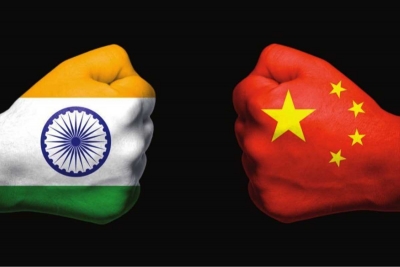In the wake of rising tensions with China across the Line of Actual Control (LAC) and government trying to limit Chinese tech to ensure national security, Law and Society Alliance and Defence Capital organized a webinar on the topic ‘Data as Weapon: China Invasion through Mobile Apps and 5G’ on Friday.
Prominent speakers included former Nasscom president R. Chandrashekhar; Centre for Knowledge Sovereignty secretary Vinit Goenka; and public policy commentator and TV anchor Siddharth Zarabi. The event was hosted by Bipindra NC, a press release said.
Beginning the talk, Goenka threw light on the idea of colonization and said that there are three kinds of colonization. First is military colonization through the power of weapons. Second is energy colonization. In the last two centuries, we saw energy colonization in which nations started dictating terms based on the energy source, i.e. oil. Third is the current era of data colonization.
“China effectively worked to strengthen its position in the area of data colonization. There were three approaches to it. China was very clear two decades back. One approach was the Great Wall, created between their people and the world. Secondly, under the penetration and expansion model, they expanded in the world. The idea was to become a major global competition—in which a greater amount of discount was borne by the state. The third approach was coercion”—to buy out the brainpower under the camouflage of technology. So what came up as the resultant was data colonization, he added.
How did China penetrate? They knew that India is a country of multiple languages. While the Westerners provided Facebook, Twitter, etc., they provided the content in local languages. People got the voice and it had a huge penetration. They captured data from algorithms, they gave them access to data, and they started maneuvering informed decision making. More than 66 per cent of mobile manufacturing in India is Chinese. Data became a tool in their hand with the fourth industrial revolution.
Goenka explored the possible methods of espionage. Even a farmer using a tractor can be a source of espionage. The sensors can have the geospatial mapping of that particular area that helps the enemy to get data about us and assess our condition.
Chandrashekhar explained that what makes the Chinese case are two factors. First, as in other cases, platforms are believed to be used to provide economic gains to the host nations. But in the case of the Chinese apps, there are strong allegations that they have strong links with the Chinese government and the its military, the People’s Liberation Army. This is dangerous for the national security of India. Second, we have an armed confrontation on the border with them. Looking at the vulnerability from this antagonist, we cannot afford to spare the threat coming in.
Further, we are not facing a warlike confrontation with the democratic Western countries whose platforms operate in India. Ultimately, the solution lies in trying to build our own capacity and capabilities to ensure that vulnerabilities from foreign nations do not pose a problem.
About his experiences on Huawei, Chandrashekhar said that there are very few people in the manufacturing team and most of the things are outsourced in Huawei. Out of the 101,000 employees, Huawei has dedicated 60-70 per cent of them to research.
About the idea of procurement by India, he said that there are two major questions: how we procure things and how we research? Manufacturing will depend on these two factors. We should find a way to ensure that procurement is done from sources without giving them protection—be it an India company or a foreign entity.
Talking about 5G, Zarabi said that in the 5G world ecosystem, Huawei is King Kong. ZTE has been propped up by the PLA and China to ensure that the space leftover by Huawei could be captured by ZTE. Just like East India Company which imperial Britain utilized to rule a large part of the world. From power, turbines, to luxury items—China is a huge player. Barring jumbo passenger jets, China has been able to reverse engineer everything in the world. It is ensuring to create modern-day structures like the East India Company..




















